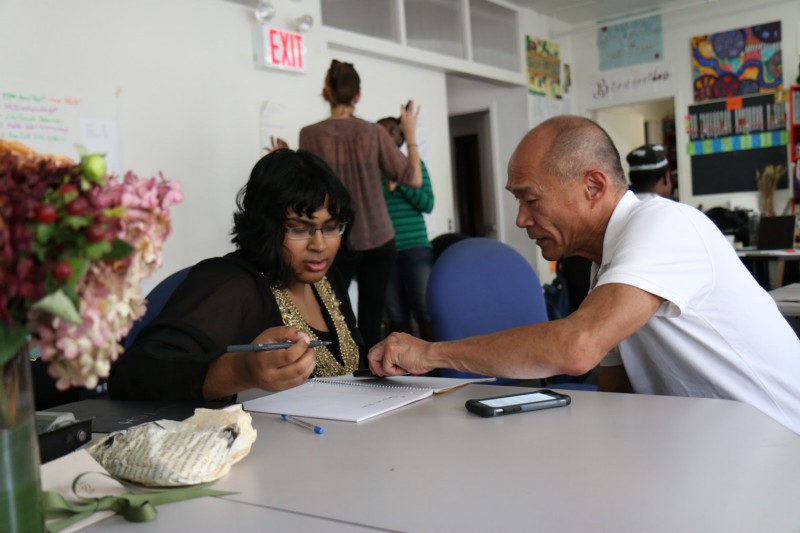There’s a lot of hype around how to build a positive school culture these days. Educators often describe this ideal atmosphere as an intangible “feeling” of sorts, a shared vision manifested after deep consideration, intention and action. So what does this look like in a student-centric environment and how do we achieve it?
One critical, and often overlooked, element of developing a learning culture like no other is the power of language. When outlining the steps to align school engagement, language should be the first consideration. If the language of learning remains the same, perhaps so will our schools.
And why shouldn’t language play a key function in determining our school landscape? Language is a critical social function that helps us express our values, beliefs and customs. Shared language has the power to foster solidarity and preserve culture. It has the power to unite, and equally has the power to divide. The current education landscape is riddled with the latest jargon so it is more important than ever to make sure our language is constructive rather than divisive.
As culture shaping relies on social convention, our language should reflect the culture we want to reinforce. One way to achieve this is to integrate a shared vocabulary index among your school community that allows you to redefine traditional learning terminology to fit your custom values. We at Headrush have a shared organizational language we use to guide our communication and behavior toward a more student-centric environment. Since language is the chief means of propagating culture, let’s be intentional about the language of learning we choose.
Defining roles within a school

Learners vs students
While students are the primary learners in a school setting, learners can also be advisors, staff, and even the greater school community. An easy way to shift toward a more learner-centric culture is to shift your language by referring to all active community members as learners. Most importantly, language must match application, meaning, the community must actually be nurtured, encouraged and engaged as life-long learners as well. “Learner” is also a more active word better representing that students, and community learners, need to be actively engaged in order to fulfill their role. If I’m passively sitting, disconnected from what is going on around me, am I fulfilling my role as “learner” in the community? A shift in language can help drive a shift in culture towards a more learner-centric environment.
Advisors vs teachers
Most learner-centric environments have adopted the term advisor as preference over the term teacher. Advisors are seen as subject teachers, educators, coaches, mentors and/or guides who help facilitate learning experiences for learners. No one term is actually superior to another, instead language helps to establish the nuanced culture we prefer to embrace in each unique school environment. While the term teacher might always feel like the umbrella designation for those in academia, shifting your language can reinforce thinking about a role in new ways beyond the traditional, limiting definitions we’ve always understood.
Defining learning experiences vs courses

Learning experiences vs courses
Initially, schools were set up to manage the masses and implemented specific subject areas with long, fixed courses. Rather than focusing on subjects, courses, classes and units, which are all very narrow in their definitions, a phrase such as “learning experience” emphasizes the flexible nature in which true development takes place. Interdisciplinary projects, field experiences, or other modules can serve as learning experiences, which are agile in nature and can be completed in sprints or iterations. A learner-centric culture accepts learning experiences as endless journeys in motion rather than seeing a course as something fixed, a single destination to simply reach.
Defining co-designed learning

Teacher-led projects vs student-led projects vs codesigned learning
Learner-centric environments are all about project-based learning, and at Headrush, we love trying to navigate the journey from teacher-led to student-led learning, with some co-designing happening along the way. We are all used to teacher-led environments and are usually comfortable with teacher-led projects, where the teacher essentially plans the project based on best practices in project based learning. The real magic happens when, based on modeling and good practice, the educator starts scaffolding to a point where the students are co-designing projects. This jointly developed teacher and student led project plan will eventually fuel the students with enough confidence and practice toward autonomous student-led project planning, where the student plans projects independently. This journey takes time, but is a natural progression and once achieved, unlocks the full development of a student through the design phase of a project.
The importance of language in our daily school interactions cannot be understated. As school culture is often defined and sustained through language, we should all be mindful of the language we use in our school settings. To promote a student-centric environment, we must consider how our operational definitions influence every aspect of how a school functions.